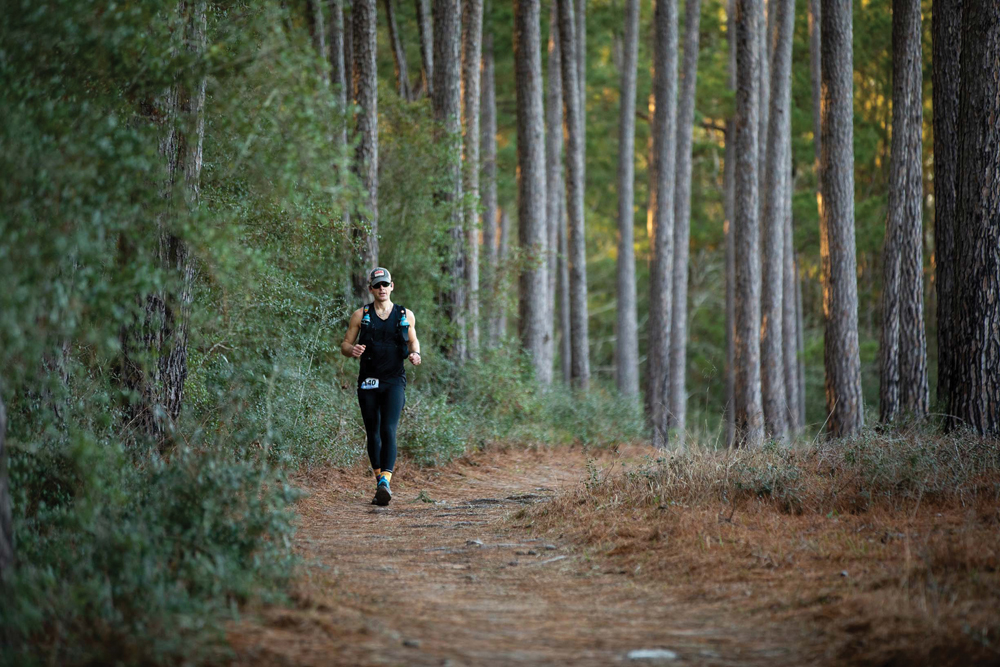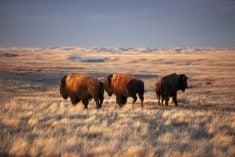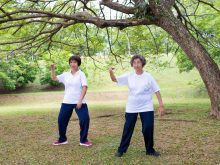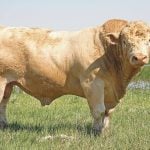To perform constantly and optimally in any passion — whether farming, running, or anything else — takes a deep understanding of the “why.” On the farm we often hear family, land and legacy as deep, value-based guides for “why” some choose life on a farm.
For me, soil health and making an environmental contribution to the world while maintaining an active outdoor life with a connection to nature are the fundamentals of why I choose farm life.
I started my farming after 4-H as a kid, where I learned to love livestock and dreamt of being a purebred cattle producer. While building my farm, the passion began with livestock and looking after animals but as my farm evolved, the dream shifted from livestock, to grass, soil and, now, microbials and putting carbon (C) in the ground.
Read Also

Gentle treatments for pain in the neck
Heading toward year-end, people unknowingly tense up against the cold and busyness, causing neck pain that can often be treated with appropriate support and gentle mobility, athletic therapist Kathlyn Hossack says.
Like running, farming is endurance based — it takes and builds discipline, sacrifice, long-term focus and a mental fortitude to endure despite nature’s obstacles and commodity challenges. For me, both on the farm and in running, when the “hard” really hits, I need to understand my “why” — even if others do not.
The more and the longer I run, the more I’m asked “why?” The motivations for long distances and ultra-marathons are perplexing to most people. When I’m asked, “What are you training for?” I often answer awkwardly because I know I am not going to be able to fully explain, and the real reasons I run extend far beyond small talk.
“An ultra this fall. My first 200-mile race. The only one in Canada,” I say.
I immediately recognize the perplexed look of confusion.
“Two hundred?” they clarify.
“Miles?”
“Of running?”
“Over how many weeks?”
I often try to exit the conversation about here because “why” is coming and to answer why takes an extended conversation and a deeper connection.
“Yeah, running. It has a 96-hour cut-off time limit.” I should start taking pictures of people at this point in the conversation, because usually faces are contorted.
“That’s crazy. Why? How long does it take a normal person to finish?”
Normal people don’t run 200-mile races. So, yes, why?
“C” IN MY SOIL
My running and regenerative agriculture journeys both accelerated and became priorities for me four years ago. They weren’t intentionally simultaneous and were independent decisions — but both were required to make drastic changes to the profitability and workload of my farm, along with drastic changes to how I lived my life and who I wanted to be.
Regenerative agriculture provided me with the tools to change my farm and running the tools to change my life.
READ MORE: Life as a regenerative ag producer is a mindset
At that point, soil tests on my farm measured organic matter at only 2.8 per cent. In-soil nitrogen was depleted, and with little water holding capacity production was depressing in drought years.
There was no financial capacity for investments in fertilizers or inputs to improve production and slowly conversations about regenerative agriculture and nature’s systems gave me affordable, low-cost systems to build my farm’s resilience and profitability.
Incorporating the five principles of soil health — with specific focus on legumes, plant diversity and incorporating livestock grazing — increased organic matter over the next five years to 5.2 per cent organic matter on that same farmland.
With soil weighing roughly two million pounds per acre in the top six inches and 58 per cent of organic matter being carbon, this five-year change in organic matter on my 1,280-acre farm sequestered roughly 3,233 metric tons of carbon per year.
One of those five principles so important to soil health and sequestering carbon is grazing livestock to optimize photosynthesis. So, over that same five-year period, the beef produced on my farm did emit carbon — in Canada about 11.4 kilograms CO2 equivalent per liveweight kilogram of beef produced. The beef originating from my herd emits roughly 1,368 metric tons of carbon per year through the full value chain from my farm to consumers’ plates.
In total, my beef farm has been sequestering 3,233 metric tons of carbon per year while emitting 1,368 metric tons — a net carbon sequestration of 1,865 metric tons per year.
This is the equivalent of offsetting the emissions of an additional 120 Canadians per year.
Lab-based soil analysis confirms that while my cows do create carbon emissions, the full farm production system offsets these on-farm emissions and all emissions through processing and distribution of that beef to consumers, and can still offset additional consumer footprints.

Putting “C” in the ground has become a huge part of the “why” on my farm, while simultaneously making my farmland more resilient, profitable and valuable.
And while regenerative agriculture gives me the tools to put “C” in the ground, endurance running has given me the tools to put “C’s” in my bag.
MY RUNNING BAG OF C’S
When I run, I run with my “bag of C’s.” I don’t have to pack it because it’s always visually dangling about eight inches in front of my right arm. If you’ve ever played Scrabble, it’s like the drawstring bag of wooden tiles, except in my bag every tile is a capital “C.”
Whatever I need to keep going while running, I can reach ahead with my right arm and pull out a “C.” If you watch me run long enough and you see me struggle, at some point I will reach ahead and pull out an imaginary wooden tile.
Confidence. Consistency. Courage. Capability. Community. Celebration. Wherever I go, running was the tool that allowed me to figure out how to build these things and carry them with me in my bag.
Trail running has taught me that hesitation doesn’t serve me. Trusting my body, keeping momentum and balancing mental authority and physical flow are what help me keep pace. On long stretches of technical running (through bush, rocks and tree roots), dodging rocks and roots and muddy holes that make movement feel like dancing, despite burning quads, I’ll often catch myself smiling with confidence as I polka over logs, creeks and stones to hit earlier runners’ footsteps in the mud.
Finding the rhythm and flow state of running that makes the obstacles enjoyable are when lessons in confidence and capability kick in.
In most endurance sports, someone at some point will tell you you’re overestimating what you can do this season, but underestimating what you can achieve in ten seasons. Four years ago, I attempted my first marathon as a virtual event during Covid.
I planned a 26.2-mile route (42 kilometres) to a neighbouring Red Angus breeder’s yard and back down my RM’s gravel roads. At mile 22, I collapsed in the ditch and called my neighbour Heather to pick me up. I returned home defeated and went straight to bed and slept through to morning. Now, four years later, I run 26 miles routinely as weekend long runs. Regardless of how slow progress can feel, running has taught me that consistency rules and is rewarded.
At most events I attend, where English is the predominant language, we tell each other “Good luck” at the start lines. However, last winter at an international race, after finishing pre-race breakfast, a French runner said to me, “Bonne courage.” That seems so much more beautiful and relevant when doing something hard. If you’re going to do something big, challenging and important, don’t wish me luck, wish me courage.
People like that French runner are a huge reason why I am falling in love with the running world. I can listen for their laughter and watch for the light in their eyes during races. I may not know them at the start line, but I make it my intention to know some of them by the finish line.
Maybe it’s a simple fist pump from another runner, or a hug from a volunteer at the 70-mile water station, or crew station support who change your socks when you can’t bend to reach your feet at mile 80. When you’re struggling and hearing the voice of quit, the running community is one of the most reliable for support.
Ultra running and farming are two key places I find remarkable people with kindred elements of passion and crazy and encouragement. Start lines and countrysides are where I find a community of supporters, high performers and expansive-mindset thinkers.
The finish lines of most of my ultras so far have been a place for uncontrollable emotions. Both from physical exhaustion and a limited ability to mentally cope with those emotions, but also from all of the pride that comes with achieving a goal.
In my 100-mile race (160.9 kilometres) in Texas in February, my pace on the back half was so slow and progress seemed so tedious, I never mentally triggered that I was close to the finish line until the last mile. I see that on my farm too, when progress can be so disappointingly slow at times — and some drought years are injuries that set you backwards — it’s easy to not realize progress until you compare where you are now to where you started. Crossing the finish line was exhausting but also opened my mind up to “what else am I capable of?” And it gave me a moment to celebrate that realization.
READ MORE: Is running good for you?
The tools running has shown me how to cultivate — confidence, consistency, courage, capability, community and celebration — are reinforced with every stride and every finish line. And developing them in sport has shown me how to incorporate them in life. It’s a unique high in that finish line moment, both looking forward to what is next while looking back at 100 miles or at my farm progress or in how I live my life. I think, “Look how far you’ve come. Keep going.”
My regenerative farming and running journeys began in my life simultaneously. The “C” in my soil makes my farm so much more resilient and dependable. The “C’s” in my bag running has developed does the same for me personally. Every growing season of progress and every finish line confirms how much further I want to keep going, both on the farm and on the trails.
And for me, that’s enough “why” to go further.















